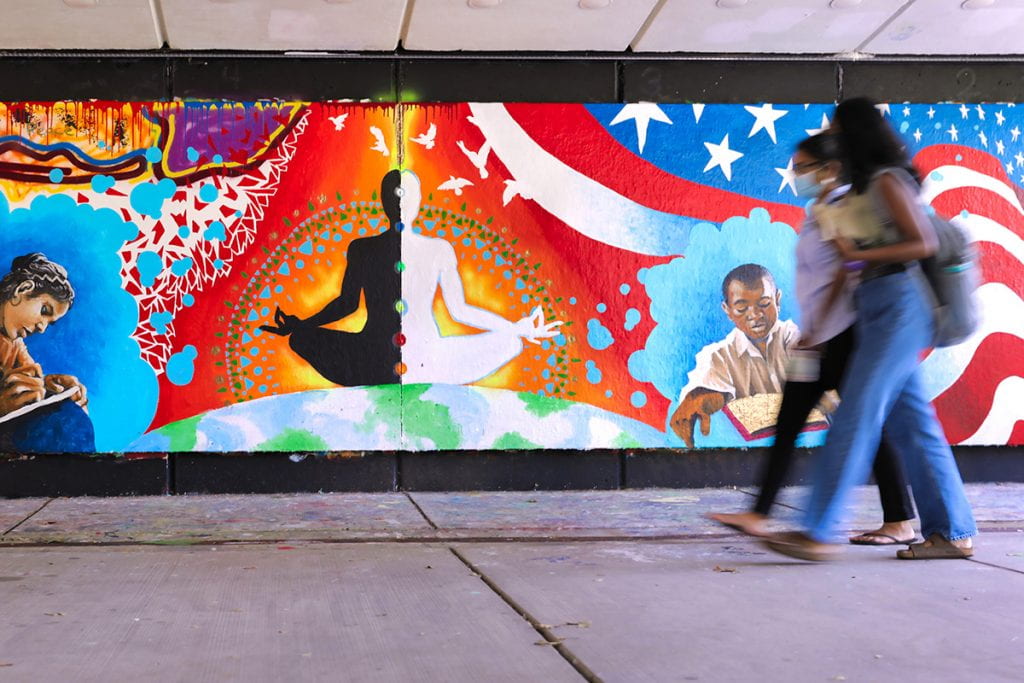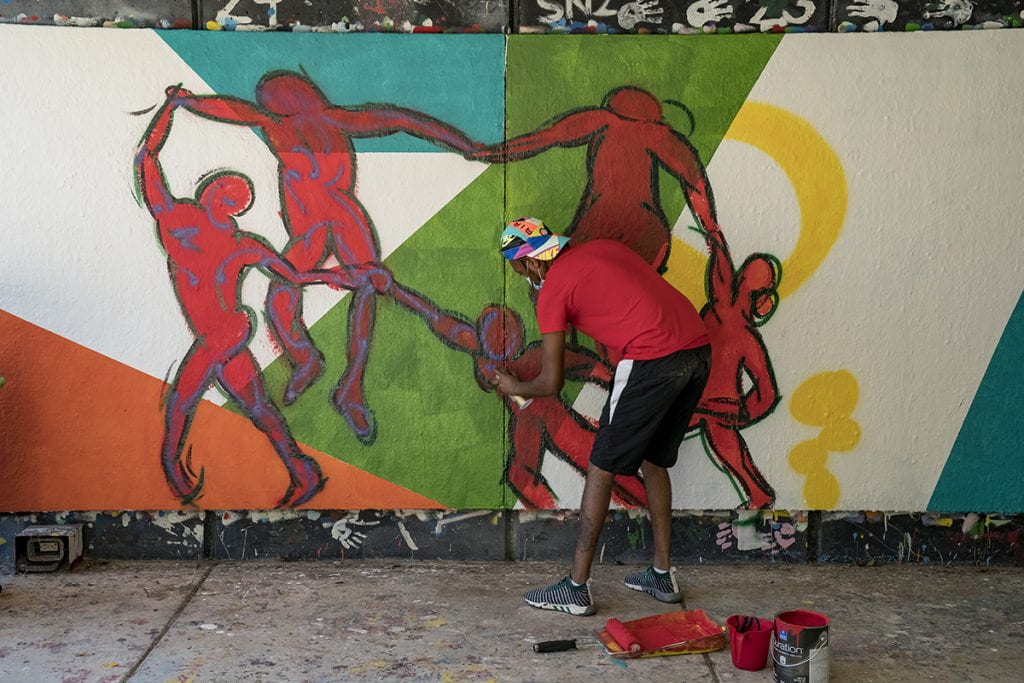
Usually by mid-September, the South 40 underpass would be painted with countless event dates and meeting locations, urging students to join student groups and to attend dozens of theme weeks or panels; it implores students to rush to make sure they don’t miss the extensive array of opportunities to learn and be involved.
Now, in a semester marked by a global pandemic and the continuation of one of the largest civil rights movements in American history, the underpass has a different request: it asks students to slow down, reflect, and consider the crucial Black figures who are often left out of American historical narratives.
When St. Louis visual artist De’Joneiro Jones received a request from Vice Provost Adrienne Davis and WashU’s First Year Center to cover the space with something new, he asked his mentees Damon Addison, Roland Burrow, Nicholas Coulter, Danny McGinnist and Brock Seals to join him.
This collaboration between the six artists resulted in a tribute to numerous Black people who have excelled in countless fields.
It includes Annie Malone, a hair-care businesswoman who is considered to be one of the first Black female millionaires; Malone worked with Madame CJ Walker in St. Louis before Walker eventually left her company.
Among others, two of the figures featured were George Poage, who competed in the 1904 Olympics in St. Louis and became the first Black athlete to win an Olympic medal, as well as Dr. Robert Williams, known for designing the Black Intelligence Test of Cultural Homogeneity test and coining the term “ebonics.” Williams received his PhD from Washington University in 1961.
“I think we did a monumental feat, we were able to do it in two weeks,” Jones said of the finished product. “We got a very short call in terms of delivering, and so we didn’t have a chance to really plan, we just went right into execution. The guys really showed up and showed out, we just went to work, and everybody had free and full range to do whatever they were feeling.”
The group faced difficult conditions while working on the project, including defacement of the property—derogatory words were painted over the mural, forcing them to paint back over it. However, they wanted to keep focus on the artwork and its overarching significance.
Jones said the feedback has been overwhelmingly positive, especially with the timing of its completion coinciding with the 57th anniversary of the March on Washington, as well as the passing of civil rights pioneer John Lewis and Black Panther star Chadwick Boseman, both of whom were featured in the mural.
“We’ve had people stand there and cry, especially at the Chadwick Boseman.” He added that seeing the mural at night adds another dimension to the project because of the color intensity and high quality of the paint.
By asking McGinnist, Addison, Burrow, Seals and Coulter to join him, Jones was able to assist and employ five other St. Louis artists, which held added significance because of the financial hardships exacerbated by the COVID-19 pandemic.
Following the painting’s positive reception, Jones expressed interest in exhibitions, publishing a coffee table book based on the work, and continue to create new works.
“I just want the conversation to broaden—Black artists should not be left out of the conversation; we should be at the forefront.”
Jones wants those who see the mural to keep thinking about public policy and the changes that need to be made in the U.S. going forward.
“That’s where the change has to start, with the public policy and decision makers. Marching and boycotting is okay, but if we don’t change the people’s mindset that make the laws, then all this stuff is in vain to me.”
